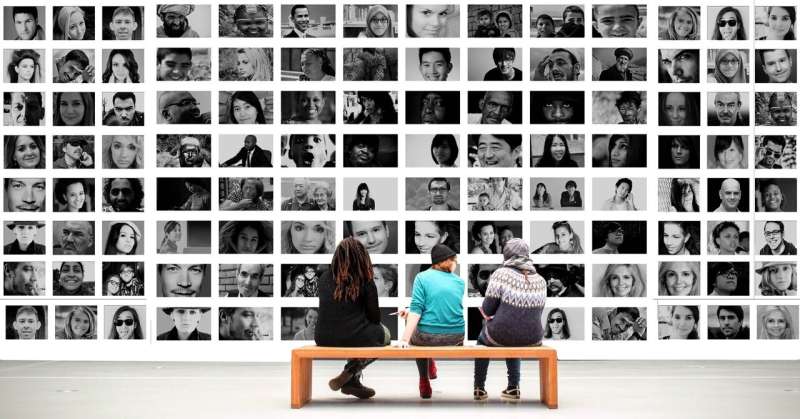More to pictures than meets the eye: study

When an image of a person appears within a photo, that individual is perceived as being less real and having “less mind,” according to new research published today in Proceedings of the National Academy of Sciences.
“Pictures have been part of human culture for thousands of years. The idea that we can discover something new about them at this stage is really exciting,” says UBC psychology professor Dr. Alan Kingstone, senior author of the study. “We found that pictures contain layers of mind.”
These layers in photos haven’t ever been noticed before, notes Dr. Kingstone.
“For example, suppose you are standing next to a poster of your face, and someone takes your photo. The new photo contains your face twice—once in the poster and once beside it,” says Dr. Kingstone. “Both faces are just different regions of the same photo, but people perceive the photo within the poster as being more removed from reality and having less capacity to experience feelings or make plans.”
The findings are surprising because while people can make a clear distinction between people and images of people in our everyday lives, it turns out the distinction applies even within a picture itself.
“We also found that people would give a person within an image less consideration and attention,” says the study’s co-author Dr. Rob Jenkins, a cognitive psychologist at the University of York in England. “In our experiments, participants donated the least money to a person in a photo of a photo.”
The researchers say that their findings have implications for digital communication, which has become more prevalent than ever due to the COVID-19 pandemic.
“There are many professional situations that involve pictures of people. When these activities are moved online, the pictures become one step further removed from reality,” says Dr. Jenkins.
“For example, during a virtual trial, a judge may see pictures of a victim on video. Our findings suggest the judge may be less inclined to view the victim as real and vivid, which could affect how the case unfolds.”
Dr. Kingstone adds that similar issues can arise in online healthcare and education. “In future research, it will be important to see if the effect can be reduced in more immersive environments such as virtual reality.”
Source: Read Full Article
